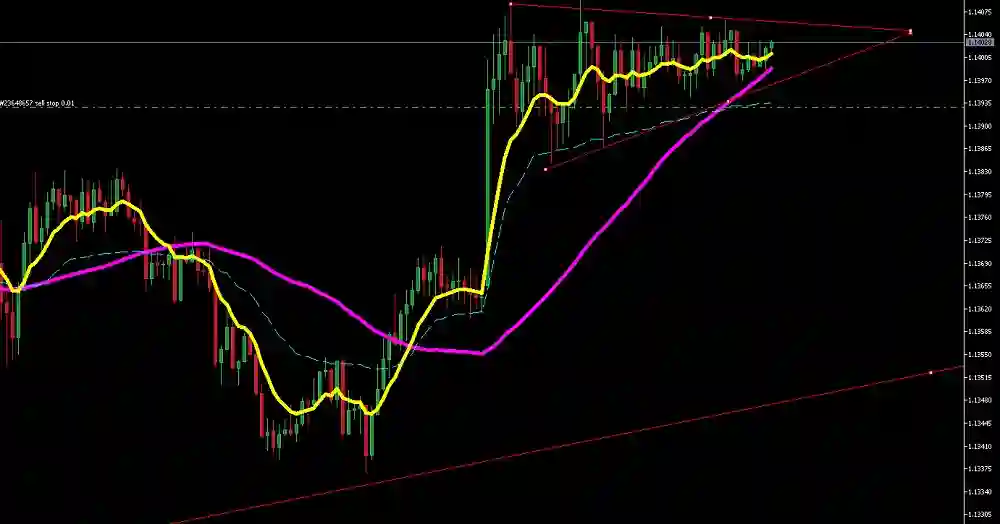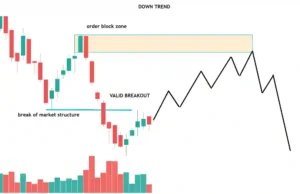10 Proven Forex Trading Strategies for Consistent Profits

Forex trading? Yeah, it can be a wild ride. You’re trying to ride the wave of currency values all while avoiding the gnarly waves that crash you to the bottom. But, let me tell ya, it’s not impossible. I’ve been there, blowing through my first few trading attempts like a kid in a candy store—blindfolded, no less. The trick is figuring out which trading strategies actually work.
So, let’s break it down. Here are 10 trading strategies that’ve been proven to give you a shot at real, consistent profits.
1. Trend Following Strategy
Okay, this one’s a classic. Trend following—simple, right? You spot a trend and ride it until the wheels fall off. Don’t fight the market. If it’s going up, you go up. If it’s going down, you go down. That’s the core of this strategy.
But here’s the kicker: the market doesn’t always trend. Sometimes it’s just… well, kind of stuck in neutral. You’ve gotta wait for that “clear sign” that the trend’s on its way up or down. Like when your coffee pot starts gurgling—that’s the sign it’s brewing. Just don’t rush into it.
I learned this the hard way, y’all. Took me about two years to figure out that blindly jumping into the market wasn’t the move. And I didn’t have the patience for a “wait and see” strategy. (But, hey, who does? Right?)
How to Spot a Trend
- Indicators: Use moving averages, trendlines, or just plain ol’ eyeballing it. (Seriously, sometimes the chart just looks like it’s going up.)
- Don’t Fight It: Don’t try and guess when the market is gonna reverse. Stick with the flow until it flips.
- Keep Risk Tight: If things reverse, set your stops low. Otherwise, you’re just throwing cash in the wind.
Tip: Don’t get cocky. The trend may be your friend, but it’s also fickle.
2. Scalping Strategy
So, scalping. It’s the roller coaster ride of Forex strategies. You’re in and out so fast, it’s like a blur. Multiple trades a day. Tiny profits. Big hustle.
Now, when I first tried scalping, I thought I was gonna be the next Gordon Gekko. Uh, spoiler alert: I wasn’t. My account balance was crying in a corner within two hours.
The Fast Pace of Scalping
- Quick in-and-out: You make tons of little trades, hoping for quick gains.
- Fast Execution: If you’re not clicking buy or sell like a madman, you’re already behind.
- Low Risk: This is where you can set stop losses tight, aiming for the tiniest moves.
Pro Tip: Scalping is about speed. If you’re not fast, you might as well be on a turtle instead of a Ferrari.
3. Breakout Strategy
Ahh, the breakout strategy—when the market breaks through those support or resistance levels like a linebacker in a Super Bowl. Sounds great, right? Well, it is, when it works.
But here’s the thing—markets can be sneaky little devils. They’ll tease you with breakouts, only to reverse right back where they came from. It’s like a bad first date: everything seems fine, then bam, they ghost you.
How to Use Breakouts
- Support and Resistance: Find the point where price keeps bouncing off. Wait for it to break out.
- Volume Confirmation: Don’t just take the breakout at face value. You need volume to back it up.
- Set Targets: Like a pit stop—plan your profit zones so you don’t lose track.
Fun fact: The first time I tried this, I had a 70% failure rate on breakouts. Pretty sure that’s the same success rate as my childhood lemonade stand.
4. Range Trading Strategy
So, let’s talk range trading. This one’s for when the market isn’t doing much at all. It’s like that moment when you realize your backyard tomato plant is just… stuck. Not growing, not dying. Just… meh.
The trick here is to buy at the low (support) and sell at the high (resistance). It’s like a game of hopscotch, but you gotta know the right spots.
How to Range Trade
- Find Your Zone: Look for areas where the price bounces between support and resistance.
- Buy Low, Sell High: Simple, right? Don’t overcomplicate it.
- Risk Management: Be ready for a random spike that breaks out. Set tight stops.
Pro Tip: Works best in quiet, sideways markets. Not so much when things get crazy.
5. Carry Trade Strategy
This one’s a long-haul type of deal. The carry trade strategy involves borrowing money in a currency with a low interest rate and investing in one with a higher interest rate. It’s the slow-and-steady approach.
But let me tell you, patience is key. It’s not like the instant gratification from scalping. No, this is like waiting for your bread to rise. Slow. But worth it in the end.
How to Carry Trade
- Interest Rates Matter: The bigger the gap between the two currencies, the better.
- Be Prepared to Hold: This isn’t a quick-win strategy. You might be holding for months.
- Keep an Eye on Global Events: Politics, economies—they all affect your carry trade.
Tip: It’s like planting a tree. You won’t see it grow overnight, but when it does, it’s sturdy.
6. Moving Average Crossover Strategy
You’ve probably heard of moving averages—but have you ever used them for a crossover? When the short-term moving average crosses above the long-term moving average, it’s like a signal to go long. And vice versa.
I don’t know, maybe I’m just a sucker for simplicity, but moving averages were the first strategy I learned. And it was smooth sailing… until I learned the market doesn’t always follow the rules.
How to Use Moving Average Crossovers
- The Basics: Set up two moving averages, one short-term and one long-term.
- Wait for the Cross: Buy when the short one crosses above the long one. Sell when it crosses below.
- Confirm with Other Tools: Moving averages are cool, but they don’t tell the whole story.
Pro Tip: This one can be slow. Sometimes it feels like waiting for my morning coffee to brew. But it works.
7. Fibonacci Retracement Strategy
I still remember the first time I tried to use Fibonacci. I swear, I felt like a mad scientist. I was plotting lines all over the screen—like, “Is this the secret to life?!” Spoiler: it’s not, but it can be the secret to spotting market reversals.
How to Fibonacci Like a Pro
- Plot the Levels: Draw Fibonacci retracement levels between a high and low point.
- Watch for Reversals: If price retraces to one of the levels and then reverses, you might have a winner.
- Combine with Other Tools: Don’t just use Fibonacci by itself. Other indicators help confirm your trade.
Fun Fact: Did you know that Victorians thought Fibonacci sequences were the key to a perfect life? Maybe they were onto something. I sure hope they didn’t use it for trading though—could’ve been a disaster.
8. News Trading Strategy
Ah, news trading. This one’s a bit more chaotic, but also thrilling. You’ve gotta be fast, like “The Flash” fast, to capitalize on the spikes caused by news events. Think of it as gambling, but with a slightly better chance of winning.
How to Trade News
- Know Your Calendar: Pay attention to big events like GDP reports or central bank announcements.
- Be Ready for Volatility: News moves markets in crazy ways. Be prepared.
- Timing Is Everything: Get in before the news, or wait until the dust settles.
Pro Tip: News trading can feel like jumping off a cliff—risky, but man, when you nail it, it’s worth it.
I won’t go on much longer—these strategies can take you far, but only if you practice and stick with it.
As I said before, trading isn’t a one-size-fits-all gig. Some strategies are wicked, some are a bit much, but the point is to find what works for you. And, you know, maybe learn from the mess-ups along the way. Like my very first herb garden… RIP, Gary.
Anyway, that’s the gist. Go ahead, give these trading strategies a shot, and let me know how they work out. And hey, don’t be afraid to take some risks. Just remember to keep your stops tight and your patience longer.







